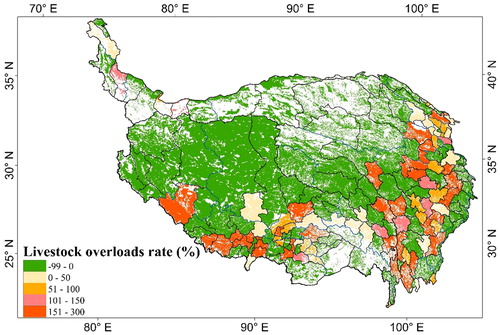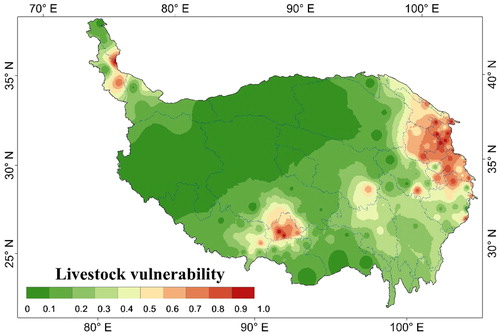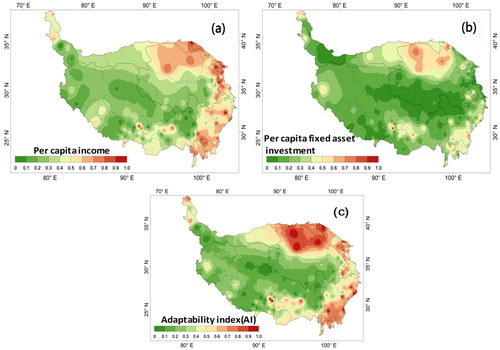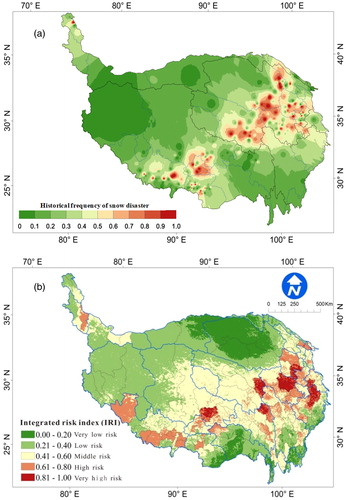Figures & data
Table 1. The assessment system of integrated risk index of the SD in the QTP.
Figure 3 Losses caused by the SD and accumulative snow depth (b) change in the QTP during the period 1961–2015 (recorded livestock deaths with over 0.60 million is considered as large-scale Losses, yet lower 0.60 million is small-scale losses).
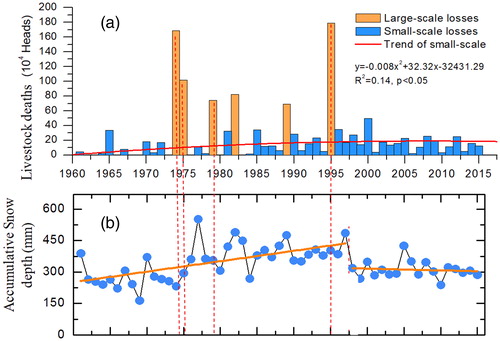
Figure 4 Annual accumulated snow depth, snow cover day and number of days (a) below 0 °C and mean NDVI change during growing season (May-September) in the QTP (Dotted line for linear fitting trend).
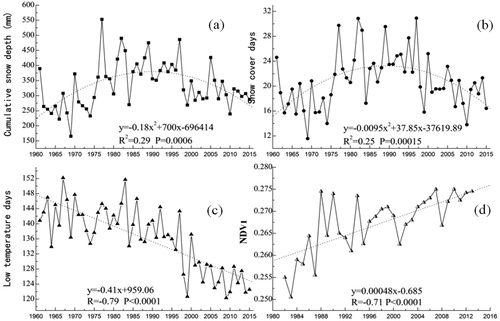
Figure 5 Spatial distribution of accumulated snow depth (a), snow cover days (b), the days below 0 °C (c) and grass yield (d) in the QTP (Note: all the values are dimensionless and are normalized into 0-1).

Figure 6 The spatial distribution of hazard index (HI) of the SD in the QTP. (Note: all the values are dimensionless and are normalized into 0-1).
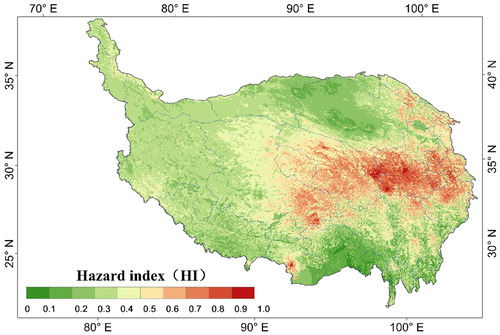
Figure 7 Spatial distribution of livestock overloads rate reflecting animal husbandry exposure in the QTP.
